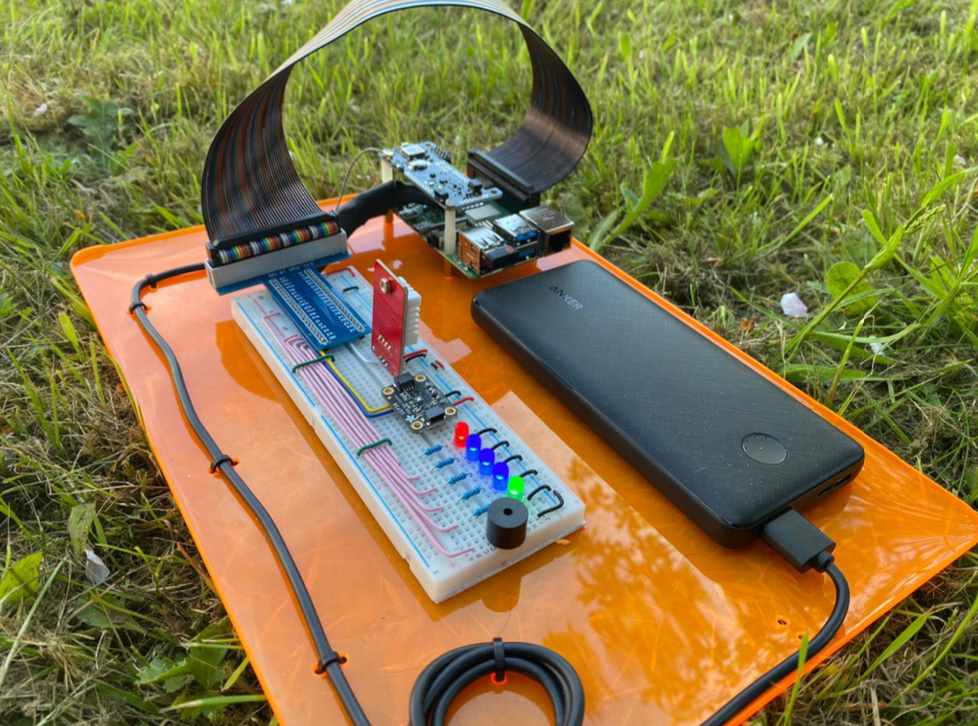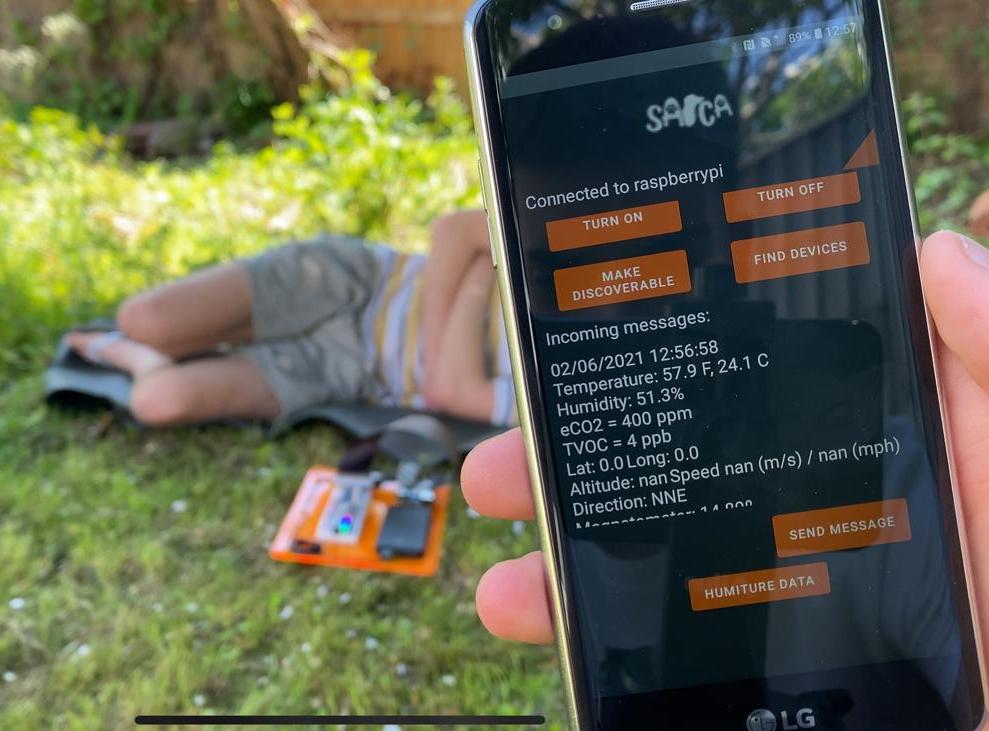
SARCA

Introduction
This was a group project for the Ubiquitous Computing module for University. Group Size: 2; 50% 50%.
The aim was to develop a novel system that enabled Search and Rescue teams to augment and alleviate the need for human interaction when performing Search and Rescue operations. The system was designed to be used in conjunction with a Canine Search and Rescue team, to provide real-time data to the handler and the team.
Technologies
The infrastructure of the system was built using a Raspberry Pi, a Java Android application, and three sensors: DHT22, SGP30, and BerryIMU-GPS v4. The Raspberry Pi was used as the main processing unit for the system, collecting data from the sensors and transmitting it to the Android application. The Android application was designed to connect to the Raspberry Pi via RFCOMM to receive real-time data. The sensors were used to measure the temperature, humidity, eCO2, TVOC, GPS, Accelerometer, Speedometer, Gyroscope, Magnetometer, Barometer, and Temperature.
Raspberry Pi
The Raspberry Pi was used as the main processing unit for the system. It was responsible for collecting data from the sensors and transmitting it to the Android application. The Raspberry Pi was chosen due to the comprehensive list of ubiquitous computing accessories that can be added to it. As most of the components used in the project are modular in nature, the Raspberry Pi was the perfect choice for the project, allowing for future developments to be easily integrated.
Java Android App
The decision to create an Android application for the project was trivial at the time of development. iOS was not considered due to the cost of development and licenses required from Apple to reliably interface with the Raspberry Pi. The Android device could communicate via RFCOMM to the Pi to receive real time data. The app was designed to be purely functional, with an extremely simple interface to connect and receive data.
DHT22
The DHT22 sensor was used to measure the temperature and humidity of the environment. This data was then transmitted to the Raspberry Pi, which processed the data and sent it to the Android application. The DHT22 sensor was chosen due to its low cost and high accuracy. It was the perfect sensor for the project, as it provided the necessary data for the system to function correctly.
SGP30
The SGP30 Multi-Pixel Gas Sensor was chosen due to the simplicity of implementation to enable us to read and provide accurate eCO2 and TVOC data without the need to stretch the I2C clocks on the Raspberry Pi. This sensor enables the development of a low-cost, low-power, and highly reliable air quality monitoring system that can be implemented to infer the presence of people in an enclosed space.
BerryIMU-GPS v4
The BerryIMU-GPS v4 was ultimately the most important sensor in the project. It is tightly packed with seven sensors, allowing us to monitor: GPS, Accelerometer, Speedometer, Gyroscope, Magnetometer, Barometer and Temperature.

Resources
If you'd like to read more about this project, please feel free to reach out and I'd be happy to provide you with the full report.